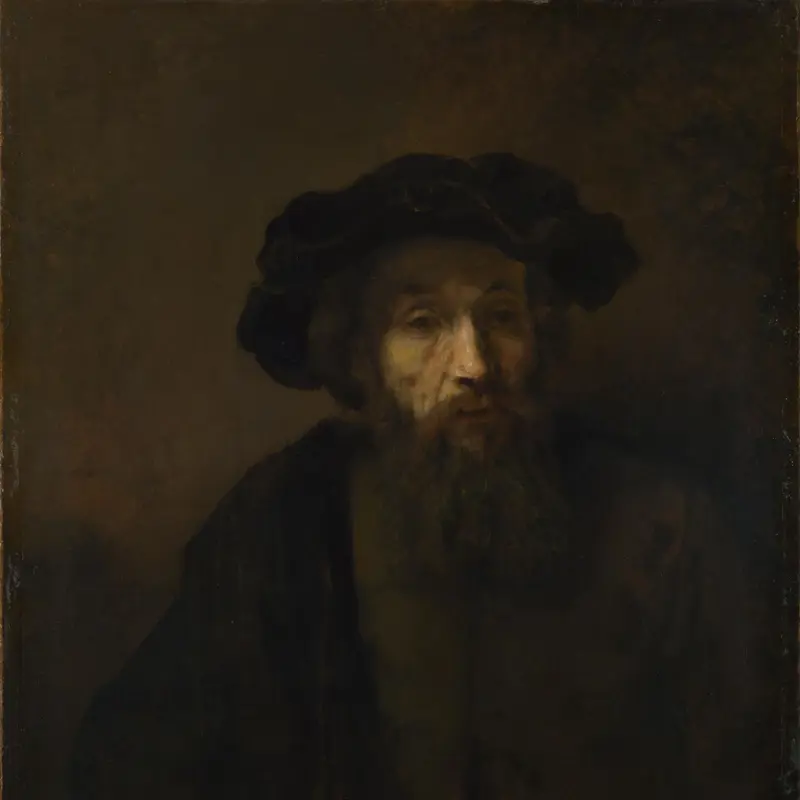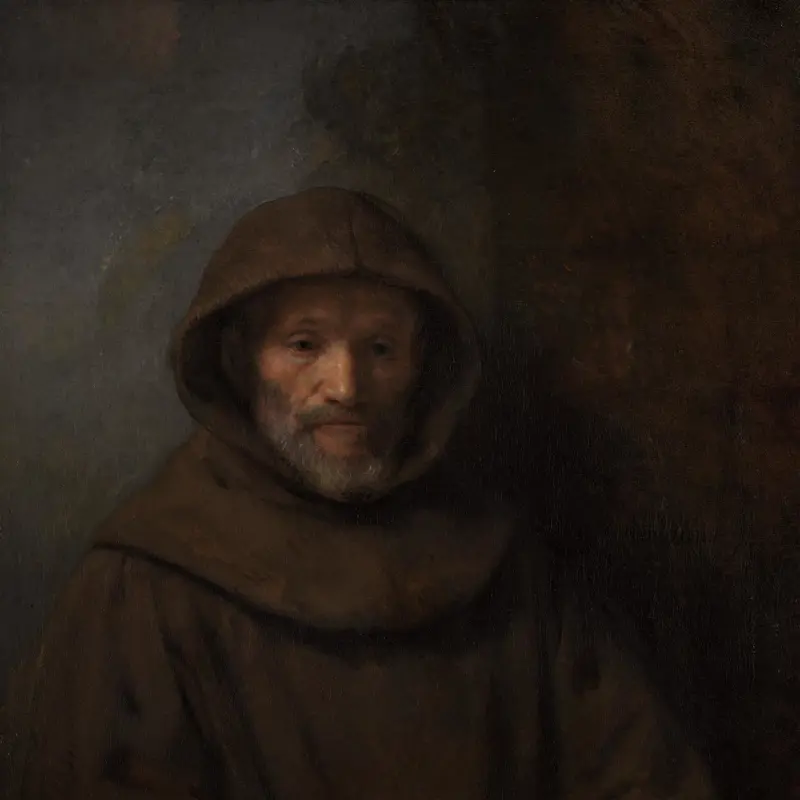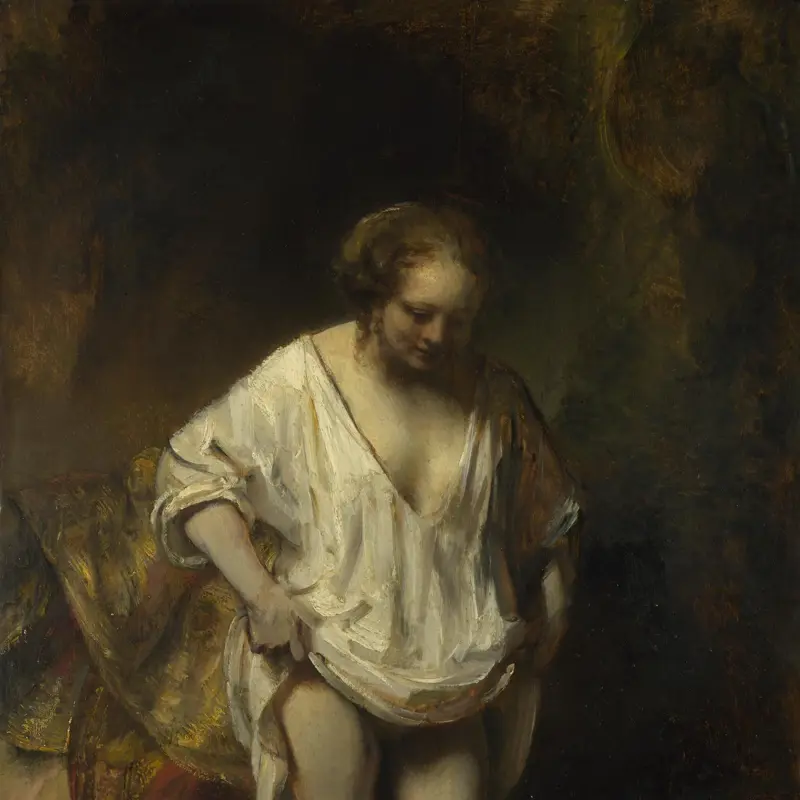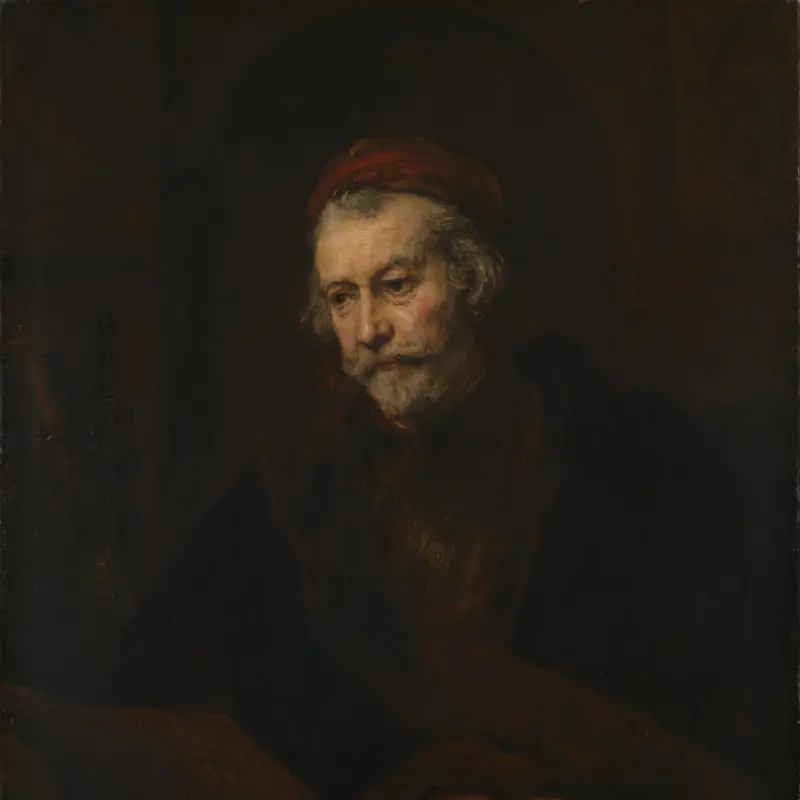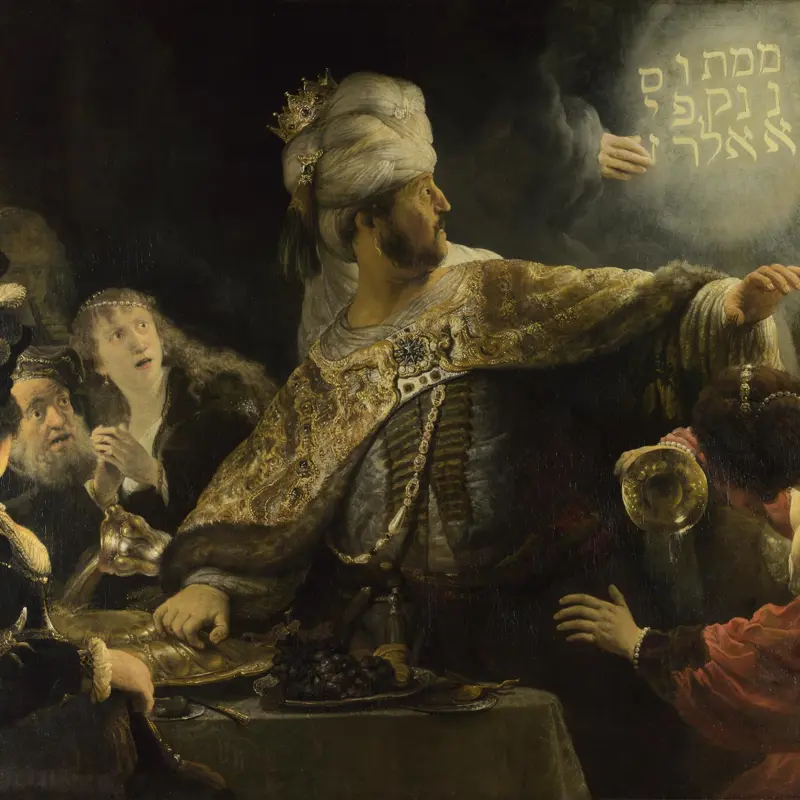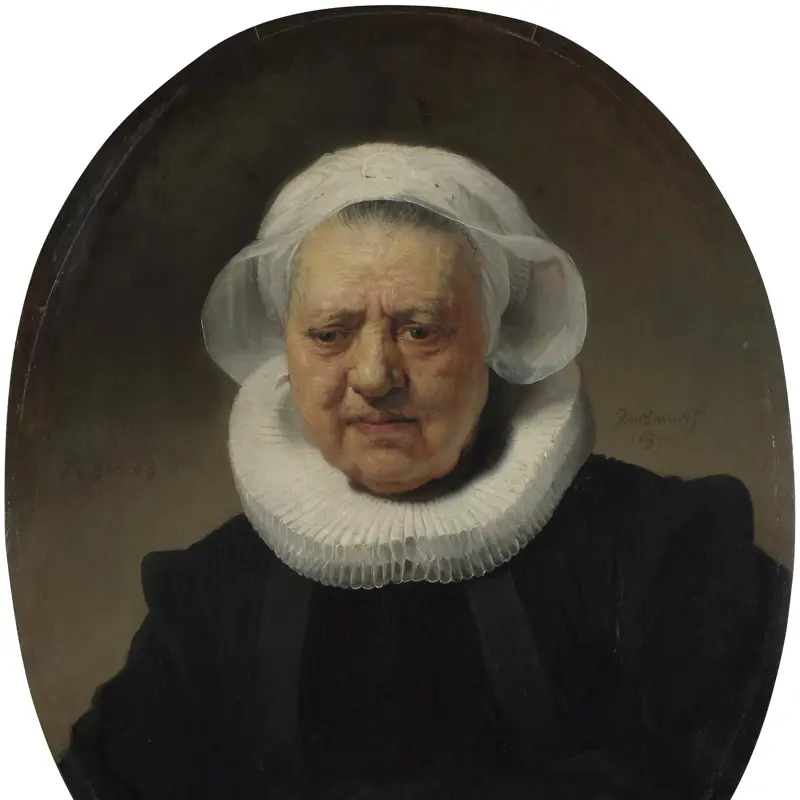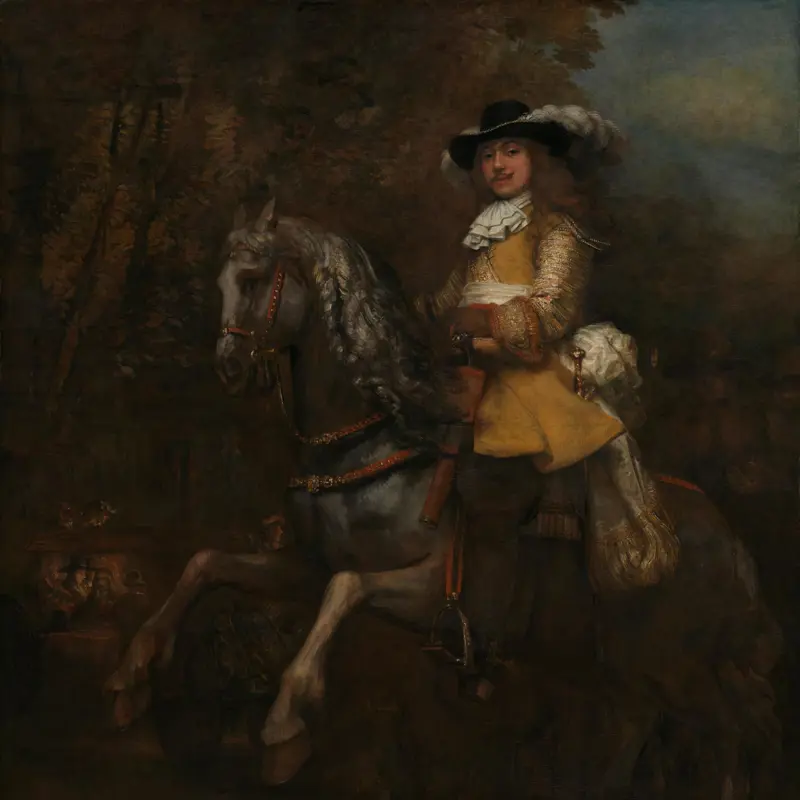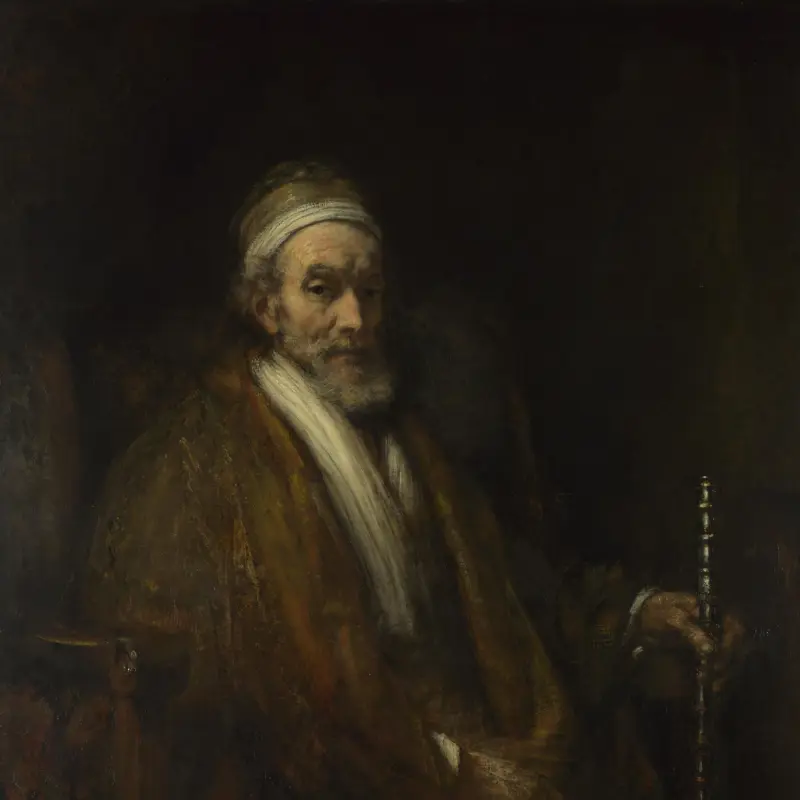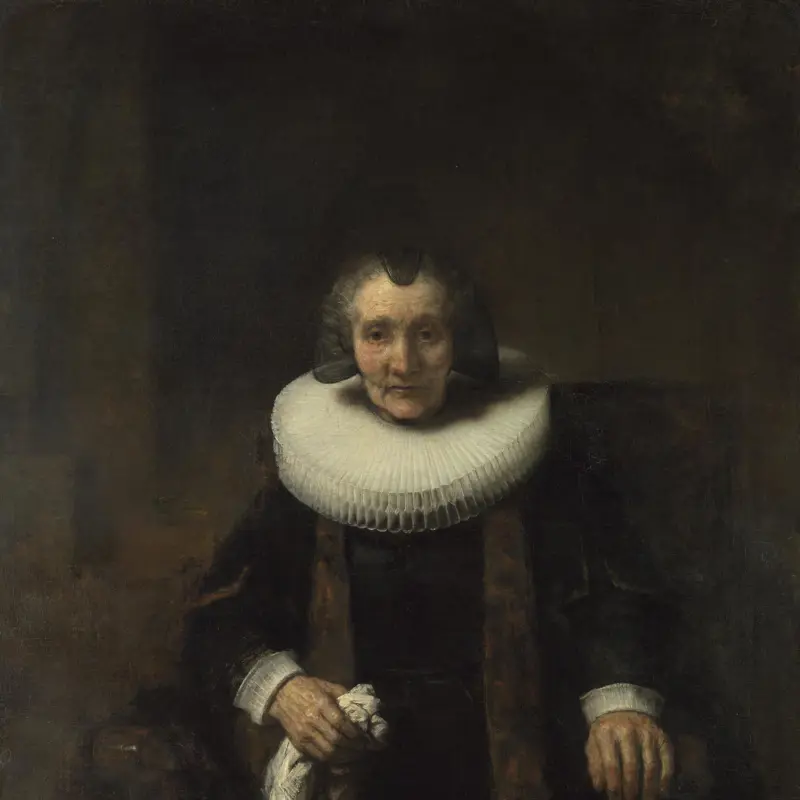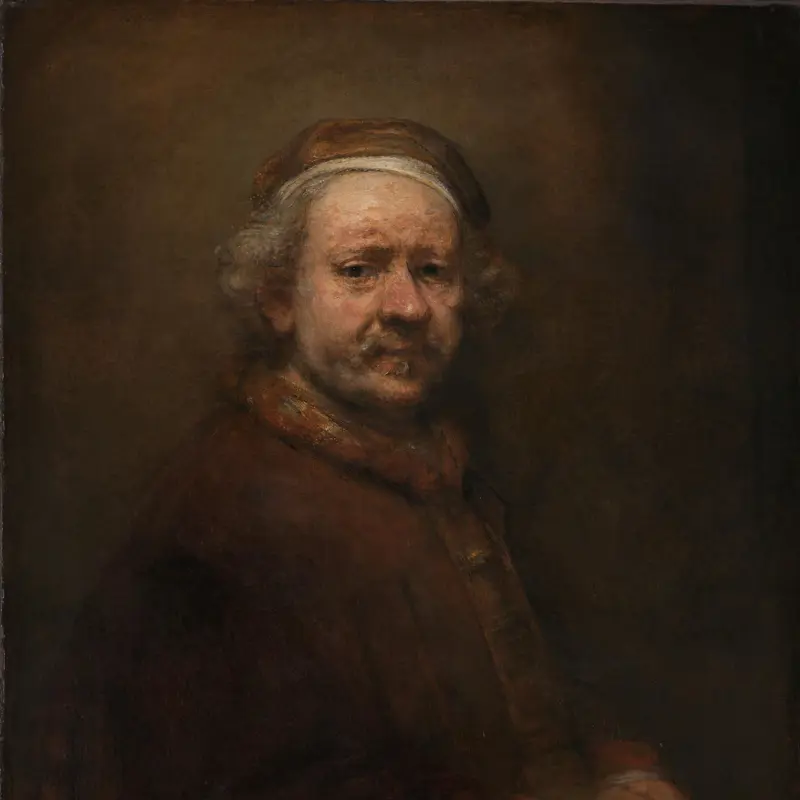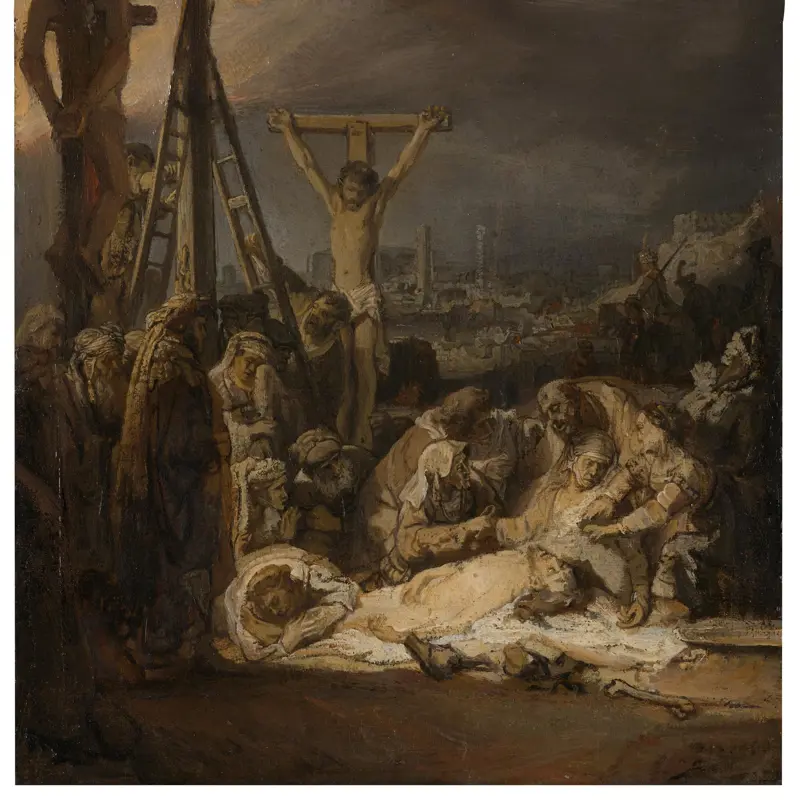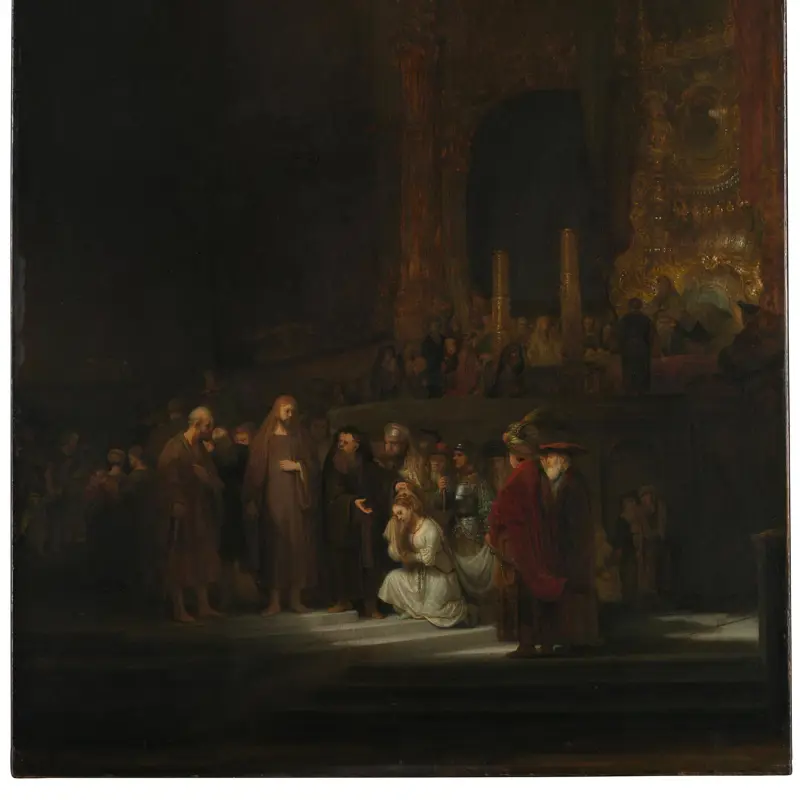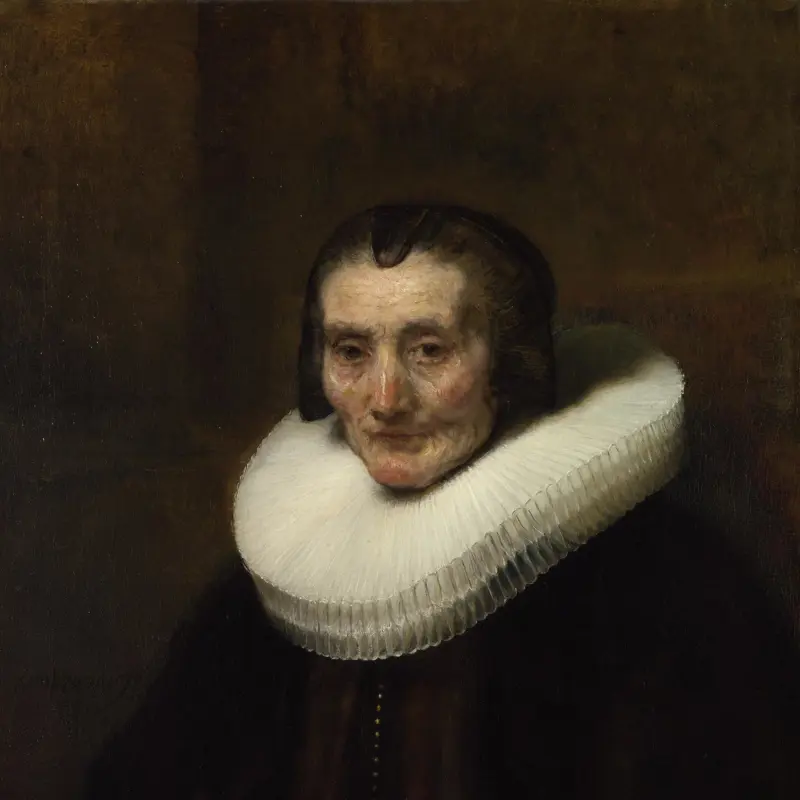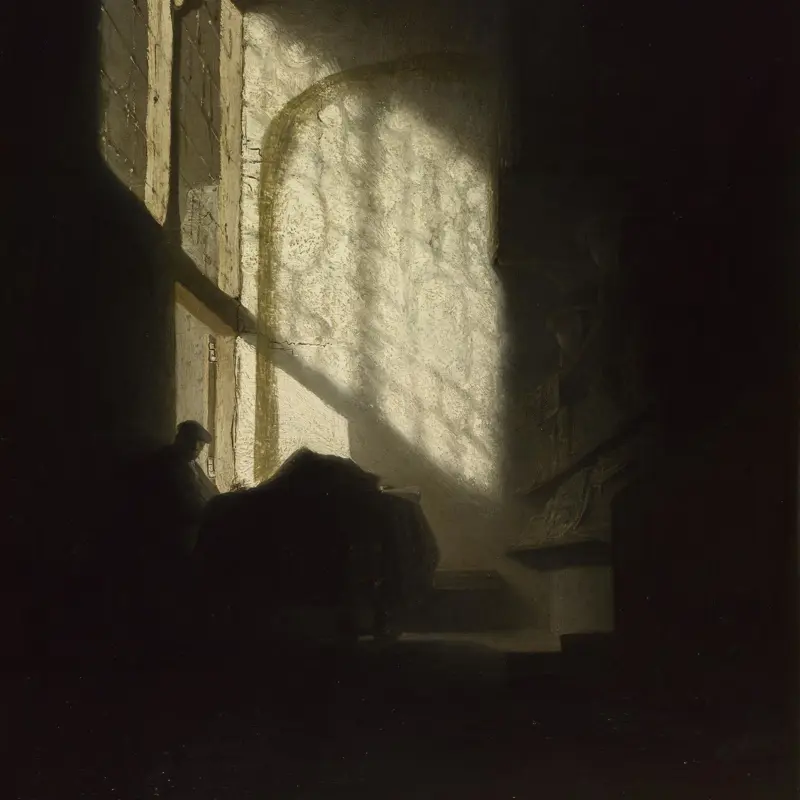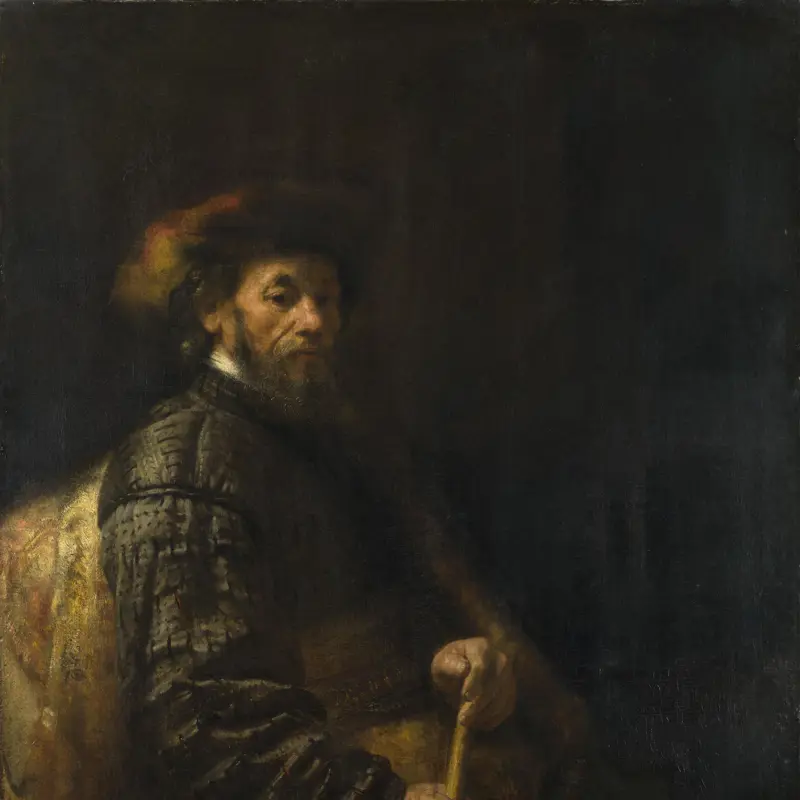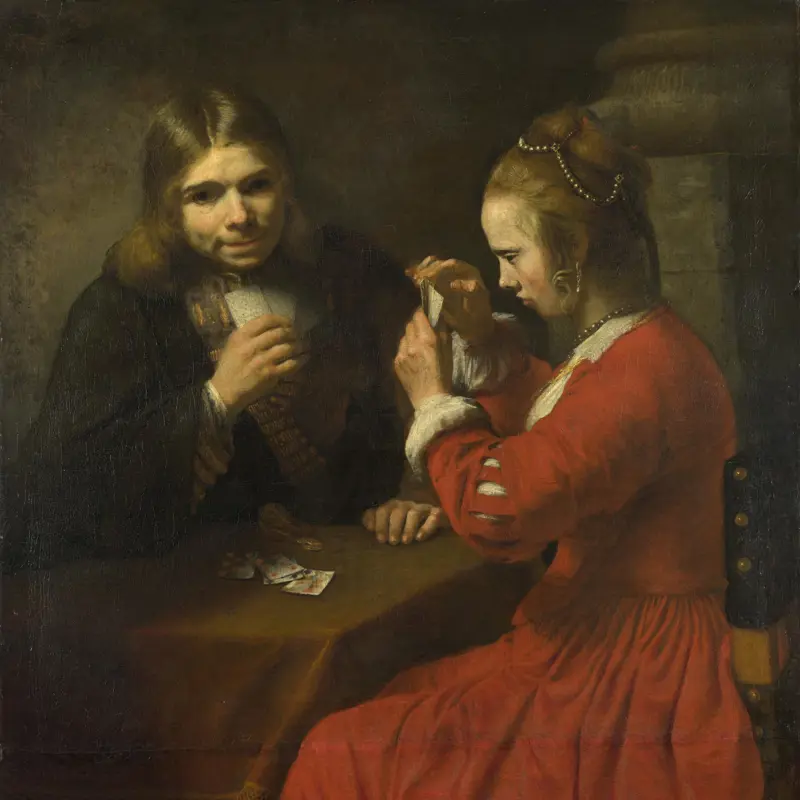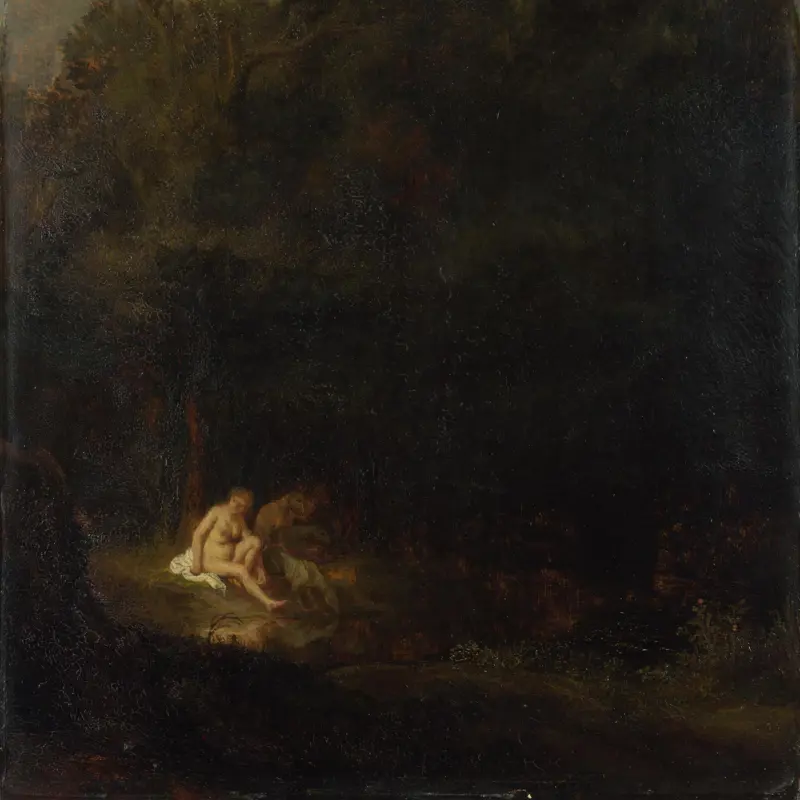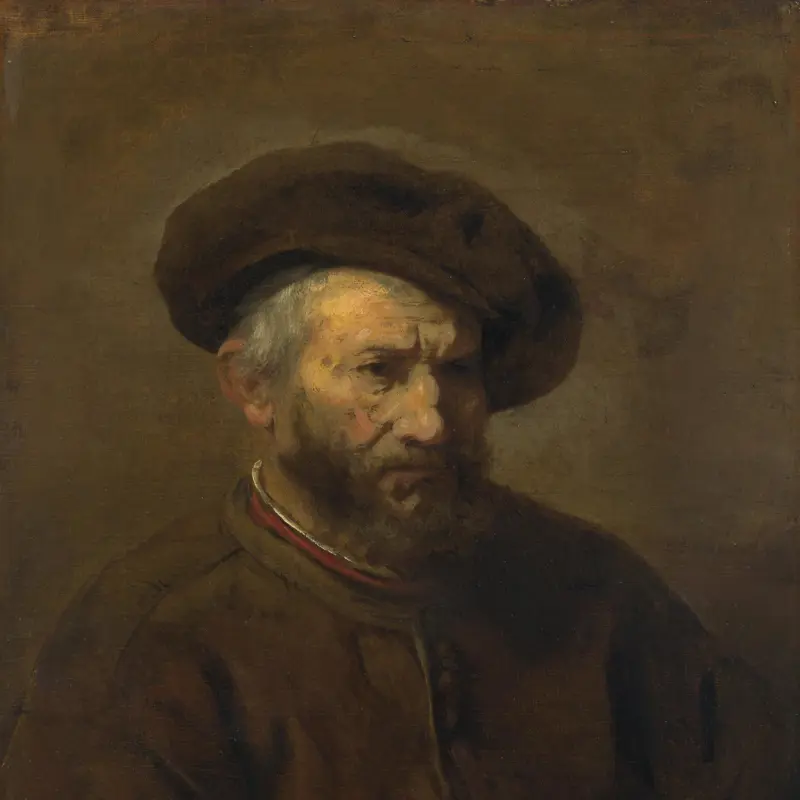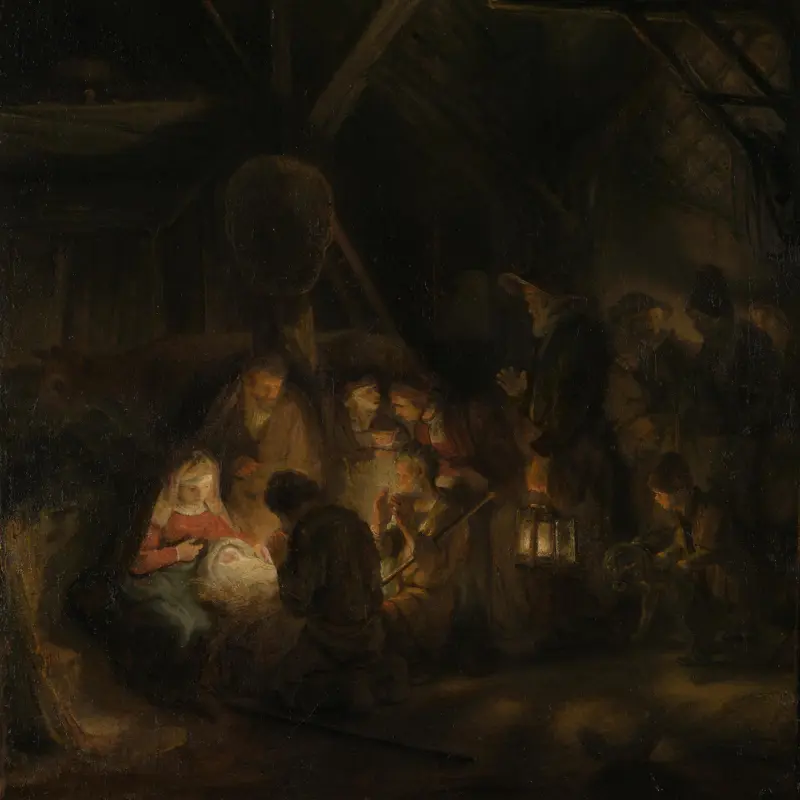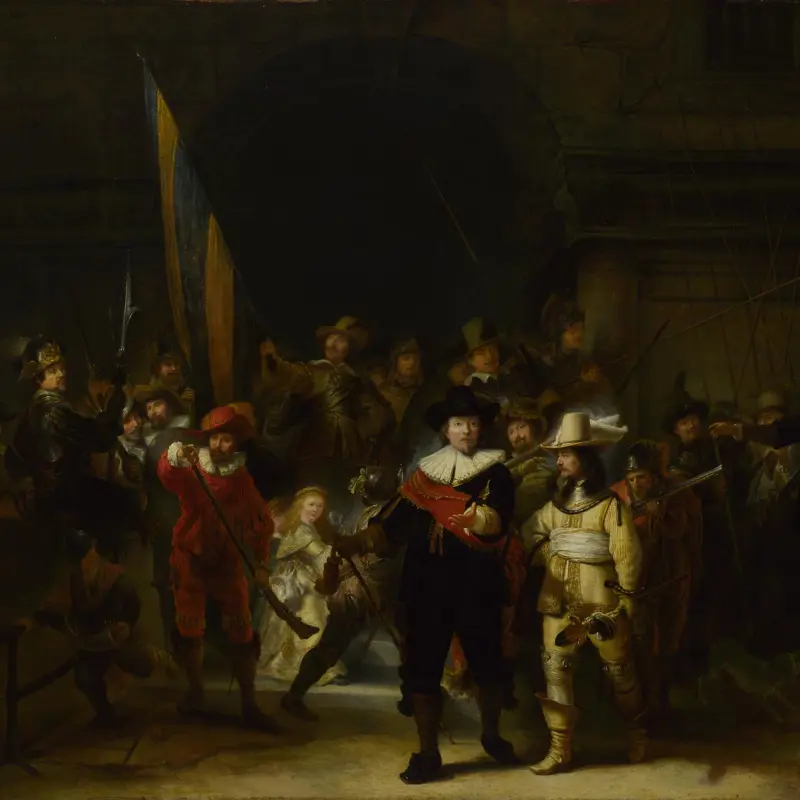Rembrandt, 'Portrait of Philips Lucasz.', 1635
About the work
Overview
When this portrait was made, Philips Lucasz. was in his thirties and an important official in the Dutch East India Company. He had been in charge of the company’s fleet, which had sailed home from the East Indies in December 1633 and was to leave Holland again on 2 May 1635, shortly after this picture was finished.
This portrait of Lucasz. was most likely made to hang alongside one of his wife, Petronella Buys (private collection). Although both are signed by Rembrandt himself, there is a clumsiness to the execution of this one which suggests that one or more of his assistants may have had a hand in it. The thick black line representing the shadow between the sitter’s lips is quite rudimentary, for example. But it’s also possible that Rembrandt was forced to finish the painting quickly, and that what we see here are simply signs of overhasty work.
Key facts
Details
- Full title
- Portrait of Philips Lucasz.
- Artist
- Rembrandt
- Artist dates
- 1606 - 1669
- Date made
- 1635
- Medium and support
- Oil on wood
- Dimensions
- 79.5 × 58.9 cm
- Inscription summary
- Signed; Dated
- Acquisition credit
- Bought, 1871
- Inventory number
- NG850
- Location
- Room 22
- Collection
- Main Collection
- Previous owners
- Frame
- 17th-century Dutch Frame (original frame)
Provenance
Additional information
Text extracted from the ‘Provenance’ section of the catalogue entry in Neil MacLaren, revised and expanded by Christopher Brown, ‘National Gallery Catalogues: The Dutch School: 1600–1900’, London 1991; for further information, see the full catalogue entry.
Exhibition history
-
2021Rembrandt in Amsterdam: Creativity and CompetitionNational Gallery of Canada28 May 2021 - 6 September 2021Städelsches Kunstinstitut und Städtische Galerie6 October 2021 - 30 January 2022
Bibliography
-
1829
J. Smith, A Catalogue Raisonné of the Works of the Most Eminent Dutch, Flemish, and French Painters: In Which is Included a Short Biographical Notice of the Artists, with a Copious Description of Their Principal Pictures […], 9 vols, London 1829-1842
-
1854G.F. Waagen, Treasures of Art in Great Britain: Being and Account of the Chief Collections of Paintings, Drawings, Sculptures, Illuminated Mss. […], vol. 2, trans. E. Eastlake, London 1854
-
1893É. Michel, Rembrandt, sa vie, son oeuvre et son temps, Paris 1893
-
1897W. von Bode and C. Hofstede de Groot, The Complete Work of Rembrandt, 8 vols, Paris 1897
-
1907C. Hofstede de Groot, Catalogue Raisonné of the Works of the Most Eminent Dutch Painters of the Seventeenth Century, 10 vols, London 1907
-
1907C. Hofstede de Groot, Catalogue Raisonné of the Works of the Most Eminent Dutch Painters of the Seventeenth Century, 10 vols, London 1907
-
1913C. Hofstede de Groot, 'Rembrandts portretten van Philips Lucasse en Petronella Buys', Oud Holland, 1913, pp. 236-40
-
1956I.H. Eeghen, 'De Portretten van Philips Lucas en Petronella Buys', Amstelodamum, XLIII, 1956
-
1960Maclaren, Neil, National Gallery Catalogues: The Dutch School, 2 vols, London 1960
-
1973W. Coolhas, De Dubbele Arend, Amsterdam 1973
-
1977K. Roberts, 'Improvements and Restorations: National Portrait Gallery, Wallace Collection and National Gallery', The Burlington Magazine, CXIX/895, 1977, pp. 724-5
-
1988D. Bomford et al., Rembrandt (exh. cat. The National Gallery, 12 October 1988 - 17 January 1989), London 1988
-
1991Maclaren, Neil, revised by Christopher Brown, National Gallery Catalogues: The Dutch School, 1600-1900, 2nd edn (revised and expanded), 2 vols, London 1991
-
1991C. Grimm, Rembrandt selbst: Eine Neubewertung seiner Porträtkunst, Stuttgart 1991
-
1993C. Tümpel, Rembrandt: All Paintings in Colour, Antwerp 1993
-
2001
C. Baker and T. Henry, The National Gallery: Complete Illustrated Catalogue, London 2001
About this record
If you know more about this work or have spotted an error, please contact us. Please note that exhibition histories are listed from 2009 onwards. Bibliographies may not be complete; more comprehensive information is available in the National Gallery Library.

